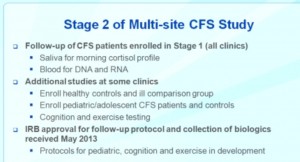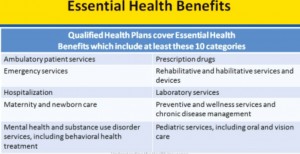View the Post on the Blog
View the Post on the Blog
Mark Berry looks back on the first day of a controversial CFS Advisory Committee Meeting
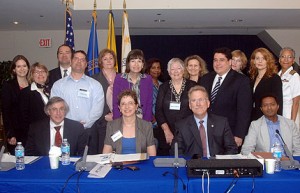
The CFS Advisory Committee (CFSAC) provides advice and recommendations to the Secretary of Health and Human Services (HHS), through the Assistant Secretary for Health, on issues related to myalgic encephalomyelitis and chronic fatigue syndrome (ME/CFS). The committee meets twice a year, and the Spring 2013 committee met on May 22-23 in Washington D.C. As usual, the meeting was streamed live over the internet, and video will be available on the CFSAC website in due course. The agenda for this meeting can be viewed here, and the roster of committee members is here.
This article describes Day One of the meeting. A packed program featured the brief return of former CFSAC Chair Wanda Jones, the welcome of three new 'liaison representatives' from patient organizations, agency updates from the CDC, CMS, HRSA and SSA, an hour of public comment, discussion of the committee's controversial new 'Prioritized Recommendations', a valuable presentation on the forthcoming changes to Medicare, public and panel question and answer sessions, and a discussion of the new requirements for the committee to provide evidence in support of its recommendations.
Those new requirements for supporting documentation, which have come down to all the health committees from the Secretary of Health, were introduced right from the start of the day, and provoked discussion throughout the meeting as the committee members absorbed the implications of what seems like a significant change. In the end, the reality seems to be that these changes are coming, like it or not, and the challenge to the committee is clear: in order to be effective in getting its recommendations through it is going to have to raise its game. Read on to find out how CFSAC began its response to this new challenge...
Wanda Returns
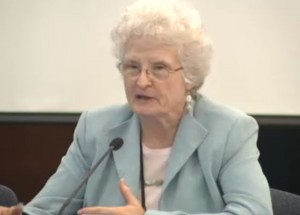
Wanda Jones "could not be more excited"
The meeting began on a positive note, with the welcome return of the popular former CFSAC chair Wanda Jones, now Principal Deputy Assistant Secretary for Health at the US Department of Health and Human Services (DHHS). Wanda told the committee that she sees real change happening within the DHHS, and thinks the work of CFSAC has been key in driving that change. She admitted that change is never fast in government, and it is particularly difficult in today’s tough economic climate, but nevertheless she thinks things are moving forward.
She welcomed the new organizational representatives to CFSAC, and described a departmental overhaul of processes relating to the health advisory committees: there are more than 270 of them, which gives some indication of how much time the Secretary can spend reviewing the outputs of each one. Committees are now being asked to provide supporting evidence for their recommendations, and some committees are now meeting for 3-4 days and preparing white papers. Wanda said that this new model – which is coming down direct from the Secretary of Health – represents an ‘inflection point’ and a ‘new paradigm’, and offers an opportunity for recommendations to be taken up and acted upon. All these changes, she said, “give us the opportunity to improve collaboration and co-operation across the department”.
Reflecting on recent initiatives relating to ME/CFS across the department, Wanda was upbeat. The FDA Workshop had been “very positive and productive” and she “could not be more excited” about what the FDA can do. She saw other “extraordinarily exciting” developments too, particularly in the vast amount of information being developed from the CDC multi-site study: “The promise of those early findings is just phenomenal”. She feels the department is now moving forwards towards a research-based case definition and evidence-based methodology, and sees a tremendous opportunity here, which CFSAC’s work in the last 5-7 years has been key in creating.
Regrettably, Wanda then had to leave: her car was waiting. Although many of us miss Wanda’s presence and leadership at CFSAC, it’s good to know that she is in a position of influence within the DHHS and is able to represent the interests of ME/CFS patients in that new role. The trust and respect that Wanda has built up within the patient community should give us all hope when she tells us that from where she’s now sitting, she sees so many signs of exciting and positive changes and opportunities. Nevertheless, quite clearly that sense of optimism is not shared by all…
Welcome to the Jungle
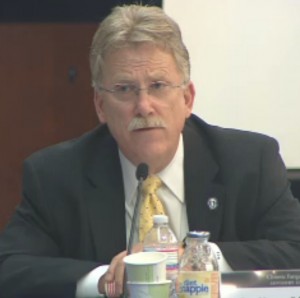
CFSAC Chair Dr. Gailen Marshall welcomes the new recruits
CFSAC Chair Gailen Marshall began his opening remarks by welcoming the new committee members. Rebecca Collier, an ‘incredibly experienced case manager’, was introduced, but (unless I missed it) she did not speak for the remainder of the meeting – perhaps she’s wise to take some time to ‘get the lay of the land’! The new ‘liaison representatives’ of patient organizations were more active, and briefly introduced their organizations.
Kim McCleary, representing the CFIDS Association of America (CAA) noted that she had attended every committee meeting except one since September 1993 (when it was known as the ‘CFS co-ordinating committee’); the CAA, she said, had been “at the leading edge of ME/CFS research for more than 25 years". Fred Friedberg, President of the International Association for CFS/ME (IACFS/ME), said that the 3 organizations represent a broad array of concerns and will help enlarge the recommendations of the committee. “It’s all to the good to have the three of us here today”. The New Jersey CFS Association (NJCFSA) were represented by Ken Friedman, who introduced the NJCFSA as a state-wide, all-volunteer organization, supporting patients and families, disseminating reliable information, and promoting research. He told the committee that they offer support groups, a helpline, website, facebook page, journal, research funding, advocacy, and much more besides, serving as a model for programs in other states.
Marshall then went on to set out how he wanted the committee to function. His email address, he said, is ‘widely available’, and he hopes that the committee – with its diverse perspectives - will go about its business in a ‘collegial and cordial’ manner, and be ‘efficient and effective’. He added that, ‘wherever we can, we want to seek a consensus’, and ‘when we don’t get that, we have to learn to agree to disagree’. That doesn’t mean 6-5 majority verdicts, he explained: it means that further information and discussion may be necessary. The aim, he explained, is to make recommendations that improve the lot of patients. And he added that he was going to try harder to keep the committee to time, emphasizing the importance of letting people speak, letting them finish (within the 3-minute timeframe for comment that he laid down), and ‘staying on task’.
In response to a question from Kim McCleary, Marshall clarified that the liaison representatives and ex-officios were also free to participate in CFSAC’s sub-committees.
Agency Updates
The agency updates section was relatively brief, with further questions to the ex-officio representatives addressed later in the meeting.
For the Centers for Disease Control (CDC), Ermias Belay presented the results of the first MedScape Roundtable Spotlight CFS CME/CE, a Continuing Medical Education program. Over 25,000 learners including 7,803 primary care phycisians and 8,082 nurses had viewed the 30-minute video roundtable discussion on “CFS: Challenges in Primary Care”. The new Medscape Roundtable, featuring Drs Anthony Komaroff, Lisa Corbin, Benjamin Natelson and Peter Rowe, was launched May 4, 2013, targeting primary care physicians using MedScape subscribers. Additional educational initiatives listed were a Medscape CDC ‘Expert Commentary’ – “Back to School and Chronic Fatigue Syndrome”; a Spanish translation of the CDC’s main CFS web page; a new pediatric/adolescent CFS section; and a medical student educational initiative, planned for MedEd Portal, with videos, slides and curriculum now ready for CDC clearance and MedEd Portal Peer Review.
Belay also outlined the CDC’s major multi-site study. Its objectives: to capitalize on the clinical expertise of physicians experienced in care and treatment of CFS patients, collect standardized data on major illness domains of CFS from patients in their practices, describe the heterogeneity of CFS patients between the practices, and use evidence-based data to address the problem of case definition and CFS subgroups. The clinics of Drs Natelson, Klimas, Bateman, Lapp, Kogelnik, Podell and Peterson are participating in the study. Results of the interim analysis were presented at the FDA Drug Development Workshop, indicating the heterogeneity of the CFS population both as a whole and between clinics. Stage 2 of the study will feature follow-up of the patients enrolled in Stage 1, with measurement of saliva for morning cortisol profile and blood for DNA and RNA, as well as additional studies at some clinics including cognition and exercise testing. IRB approval for the follow-up protocol was received May 2013; the protocols for pediatric, cognition and exercise testing are in development.
Finally, Belay presented the Advocacy Group Collaboration work: the CFS Patient Centered Outreach and Communication Activity (PCOCA), a one-hour conference call, with a second call Jan 14, 2013 including Nancy Klimas and Connie Sol: “Redefining Exercise in CFS through Reconstruction of Aerobic Capacity”. Consultation about the content for the Pediatric/Adolescent CFS section was ongoing.
In a very short period of questioning, Kim McCleary asked whether the CDC intended to make the raw data from the multi-site study available to the public through RCDC. That would be a long process, said Belay, and the CDC would have to analyse it themselves first, but “eventually in future we’ll consider that”. Ken Friedman said that he personally believed the ‘trained trainer’ approach is more effective than online training, and asked whether the CDC had any evidence of increased effectiveness of diagnosis or treatment due to the program. Belay answered that such evidence would be extremely difficult to collect, but it was possible to measure how much the participants had understood through comprehension tests.
Speaking for the Center for Medicare & Medicaid Services (CMS), Alaine Perry was very brief because the agency had two speakers later on in the meeting. CMS, she explained, runs Medicare and federal Medicaid, and now has a new role with the Affordable Care Act to implement the new health insurance marketplace, regulate the private insurance market, and inform consumers about their new rights, options and protections. More information is available on healthcare.gov. Perry highlighted a major new funding opportunity in Healthcare Innovations Awards Round 2: up to $1bn is being spent on testing new payment delivery models, and in particular, on new models that improve care for populations with specialized needs. For more information, see cms.gov and click on ‘Centre for Medicare/Medicaid Innovation’.
For the Health Resources and Services Administration (HRSA), Deborah Willis-Fillinger explained that the HRSA is responsible for access to healthcare activities, with an $8.5m budget. Its healthcare program has been expanding, supporting 8500 health centers across the country, targeted at under-served communities. She highlighted two new funding programs for integrative medicine. Asked whether the HRSA was still teaming up with the CDC to send out 17,000 paper copies of the toolkit, she replied that they were not, and were looking at ways to become more efficient .
For the Social Security Administration (SSA), Amanda Wulf had nothing to add to her comprehensive update at the previous CFSAC meeting; their current CFS/ME policy is on their site at socialsecurity.gov and if there are any updates they will inform the committee.
Public Comment
The meeting's first public comment section featured strong testimony from Courtney Miller, Phoenix Rising forum member Gabby Kline, Denise Lopez-Mojano, Jennie Spotila, Mary Schweitzer, Mary Dimmock, Jeanette Bermeister, Amy Squires and Janet Smith (on behalf of Anita Paton).
Courtney Alexander Miller
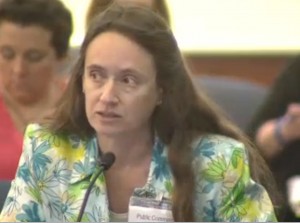
Courtney Miller, wife of Bob, representing Simmaron Research
Courtney explained that she was speaking as a representative of the Simmaron Research Foundation, and described the organization. She pointed out that sites of excellence are wholly underutilized: CFSAC has made 7 recommendations in the last 9 years to fund a network of centres of excellence but this has still not come to fruition. Expert clinicians are our most powerful resource, she said, and they need to be utilized. A recent treatment study at Dr Peterson’s clinic found 70% success in HHV and CMV patients, and is a model example of what should be taken up. The CDC study is a good model for how to study ME/CFS...and she can imagine how a multi-site study of NK cells, Ampligen and Valcyte etc would work. Multiple Sclerosis benefitted from such a study: that is what found the mechanism in MS. She thanked the FDA for the Workshop, and said we now need the FDA to articulate a clear path forward for the drug approval process. Courtney specifically requested that the committee make a recommendation to the Secretary that the FDA should consult promptly with clinicians in the multi-site study to develop and publish a set of clinical endpoints that pharma can rely on...but no such recommendation was discussed or proposed during the meeting...
Gabby Kline
Gabby is a Phoenix Rising forum member; a transcript of her presentation is available here. Gabby focused on her own choices of priorities from CFSAC’s past recommendations. She started by asserting that the CDC toolkit was the reason for her decline: its recommendation of anti-depressants and ‘getting out and exercising’ was taken up by her physician, and she tried this, causing a deterioration in her condition. The recommendation to remove the toolkit is therefore critical, in her opinion, bearing in mind the physician’s imperative to “first do no harm”. Gabby noted that she was able to speak this year, but not last year, and felt the need to be a voice for the 25% of patients who are the most severely affected and who are unable to testify. Those patients are not part of studies, she pointed out: “Why leave us out as if we don’t exist?”. Gabby’s second priority choice was to fund research commensurate with the scale of the problem. ME/CFS is the most underfunded illness per size of population affected, she pointed out. Her third recommendation: the call for a stakeholders workshop to establish a new case definition, using the CCC as a starting point, and focusing on post-exertional malaise (PEM). Gabby has been ill with ME/CFS since she was 15 years old. “With ME/CFS my functionality, my dignity and my hope has been taken away from me.”
Denise Lopez Mojano
Denise began by praising the FDA meeting: the engagement, collaboration and participation were notable and she hopes that now happens throughout HHS. She quoted Nancy Klimas: ‘we’ve got to be able to define the condition well’, and the key challenge with CFS/ME, she said, is definition. This isn’t easy with definitions ranging from the vague to the CCC, and in order to have a well-defined patient population, she urged adoption of CCC now. She quoted Dr Kweder too: ‘A research definition is needed so that we can begin to study things’. HHS, she said, needs to invest in tools to specifically study signs, symptoms and disease progression. Her list of priorities overlap with CFSAC’s past recommendations: the need for a case definition workshop should be on the high priority recommendations list, as well as increased funding and the creation of centres of excellence; the CDC toolkit should be removed. Finally, she urged that the ‘priority recommendations’ should be properly discussed in the full committee...another plea that was to fall on deaf ears...
Jennifer Spotila
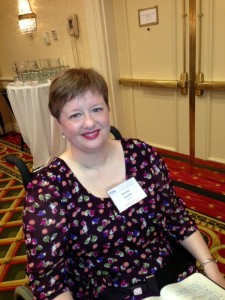
Jennifer Spotila: "We deserve more than formality"
Jennie's telephone testimony can be viewed here. The FDA workshop emphasised the need for more research, Jennie said, but government is failing to fund research commensurate with the problem. A mere $6m of NIH funding had been projected for 2012, but it actually came to $4.5m. Actually, it was worse than that: 3 of those grants were unrelated to ME/CFS, and taking those out, the true figure was $3.7m – a drop of nearly 30%. Is this what the Obama Promise looks like, she wondered? Almost 70% of conditions saw an increase in funding in this round. Obviously the low number of proposals is a problem, but crucially the NIH has not set aside any funding to stimulate research. An RFA process exists for this. Jennie is tired of the ‘chicken and egg’ argument about whether more proposals are needed in order to generate a bigger funding pot, or the other way around. Her suggestion: try both and see what happens. “This is a crisis situation, I do not accept a 30% drop”. The second issue Jennie highlighted was that less than 30 minutes had been allocated for the approval of an 18-month-old priority list recommendation; this situation is patently ridiculous, Jennie said. If you go along with this, she warned the committee, you will be indicating that this whole process is merely a formality. Please postpone discussion of the priority recommendations to tomorrow; if that doesn’t happen she called on the committee to vote No. “We deserve more than formality,” she concluded. The committee did indeed postpone the 'formality' as requested - but was this enough to end the controversy?
Mary Schweitzer
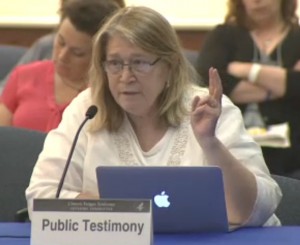
Mary Schweitzer: "Is that all you can offer them?"
Mary focused attention on an estimated 850,000 undiagnosed ME/CFS sufferers. 25% of them are severely ill and many end up on the street, Mary said. “If people are homeless and desperately sick because of this disease, isn’t that your problem?” she asked, “Isn’t that your failure?” In the Fukuda definition, PEM is just one of many symptoms, she pointed out, but talk to patients and it’s the critical symptom. Yet she knew of one doctor who had prescribed swimming, and the patient ended up bedridden for 2 years. The Lights' study shows abnormalities after exercise, as does the work of Maes and Twisk. Every one of the patients Mary had spoken to said they need doctors to know about PEM. Reading from the CDC’s advice, she highlighted a section saying that a ‘specialized approach’ was needed for bedridden patients, and pondering what exercise to give them. “Is that all you can offer them?” she asked. She pointed out that the NIH continues to spend next to nothing on research, and highlighted Tom Kindlon’s analysis of harms resulting from CBT and GET, and his comment that if this prescription for exercise was treated in the same way as drug treatments, it would have been banned due to adverse reactions. There’s no debate any more as to whether PEM exists, Mary said, so shouldn’t it be the first thing we tell doctors? “I can tell you it’s the first thing we wish they knew. And then maybe we could start to find those 25% who are missing”.
Denise Lopez Mojano (for Matthew)
Denise spoke for a second time on behalf of Matthew. Relaying Matthew’s commentary, she said that patients need data, partners, and sources of money, but we’re financially weak and isolated: “we need you to step up to the plate and use your resources and power to make this happen”. The FDA workshop was positive and Matthew looks forward to continued collaboration, but the meeting made it clear that there are building blocks needed first. We need consensus on the definition, and Matthew urges adoption of the CCC. We also need adequate funding for research, for outcome measures and for biomarker research. CFSAC’s recommendations should be followed through: Commensurate funding, Centres of Excellence, a $7-$10m RFA for biomarkers and outcome validation, and removal of the CDC toolkit. “As always”, he concluded, “we are ready to work with you to move things forward for people with ME”.
Mary Dimmock (for Joan Grobstein)
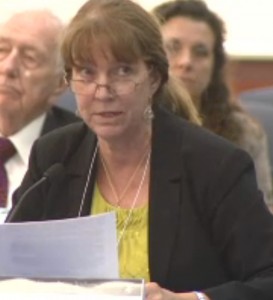
Mary Dimmock spoke on behalf of Joan Grobstein
Joan is a physician, unfortunately too sick after the FDA meeting to attend CFSAC today. She thanks the FDA for the workshop: it was a step forward, she thinks. But the success of that workshop makes it clear that CFSAC is not fulfilling the need for dialog, despite hours and hours of patient testimony. Even at the workshop, the FDA gave the message that there are no measurable outcome measures: that’s not true, she pointed out: there is the Pacific Fatigue Labs’ cardiopulmonary exercise testing (CPET); Dr Peterson finds correlations with that in his patients, Dr Klimas uses it, and it’s already a valid biomarker in other diseases. There’s also NK cells: both of these measures need to be tested on more patients. CDC’s new multi-site study includes neither of these measures, and neither were mentioned at the FDA meeting. The CDC is squandering an enormous opportunity to evaluate these potential biomarkers. As to priority recommendations, Joan urged removal of the CDC toolkit: its credibility is compromised, and the CDC’s website is still inaccurate. And we won’t be able to begin to solve ME until we study it properly: we should adopt the CCC and ICC and investigate biomarkers, she said. “ME is not an ill-defined nebulous disease, rather ME has been badly defined and underfunded. We need better science and better funding NOW.”
Jeanette Bermeister
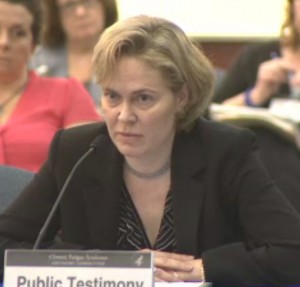
Jeannette Bermeister: "Are we really going to watch an available and effective drug disappear?"
Jeanette is relatively new to advocacy and warned that she ‘doesn’t have the lingo down yet’ - but she can’t bring herself to use the demeaning name ‘CFS’. She highlighted three reasons for being able to be here today: Ampligen, her husband who insisted on giving Ampligen a try, and Dr Peterson. She thanked Alaine Perry and Gailen Marshall for voting in favour of Ampligen. The FDA presentation on Ampligen, she said, had cited symptoms of the disease as side-effects, and had denied the opportunity for rebuttal. Why do some patients respond to Ampligen and others not, she wondered? Clearly there are subgroups, so why is nobody studying that? We have a huge piece of the puzzle here, she said: let’s use it. Are we really going to watch an available and effective drug disappear? Could this possibly make sense to anybody? It clearly works for many people, and it clearly is safe (as the FDA committee confirmed). Get it going, she urged: if you don’t, future suicides are all but guaranteed. The FDA admitted that it didn’t understand the disease before its stakeholders meeting, she pointed out – and it’s a shame they didn’t realize that before making their decision on Ampligen.
Amy Squires
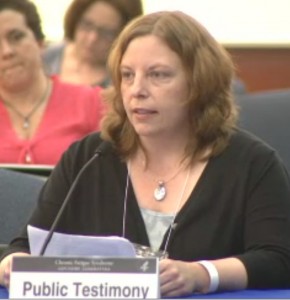
Any Squires: Impressed by the FDA, skeptical about CFSAC.
Amy is Chairman of the board of the CFIDS Association, and her testimony is available here. Amy said she was skeptical about the CFSAC committee. The agenda had been circulated only 2 weeks before the meeting. CFSAC had been called out for not discussing the priority recommendations publicly, but even after that, the agenda only allows 30 minutes for discussion and approval of them. She was impressed by the FDA’s approach, actually consulting and listening to patients, and she would like to see the same from CFSAC.
Janet Smith (for Anita Paton)
Janet introduced herself as Dr Janet Smith, from Incline Village Nevada, an ME/CFS patient herself. She thanked Alaine Perry for her plea at the Ampligen committee, and also Dr Marshall. She felt that the FDA stakeholders meeting was a good start. Regarding the Ampligen committee meeting, she noted that Dr Komaroff, who voted no on all questions, had a former relationship with Hemispherx and should have been excluded. The FDA, she said, is still stating that it will take 5-10 years for drug therapies to become available, and that is not acceptable. “I know that I will die from ME/CFS, either from infection or from cancer”. She called on all government agencies to be as pro-active with ME/CFS as they were with the AIDS epidemic, and more recently with Multiple Sclerosis and Alzheimer's Disease.
Time to get down to (postponing) business
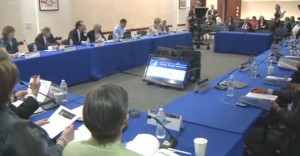
After lunch, the committee moved on the first – and arguably the most important and controversial – business item on the agenda: the approval of the ‘prioritized recommendations list’. Except that it didn’t…
Approve the Prioritized Recommendations List
After “thorough discussion” over lunch, Marshall explained, the agenda had been changed: discussion of the recommendation lists had been moved to tomorrow afternoon after the public Q&A session. Marshall explained the background to that decision: 18 months ago, the committee had decided that its 17-page list of recommendations was too confusing; it had become too hard to see which recommendations are the most important. It had never been the intent, Marshall emphasized, to suggest that the new list was an ordered list of priorities; rather, the larger list has been consolidated, ‘achieved’ items removed, and the highest priority recommendations are all listed together. The two sub-committees had discussed and agreed this list.
What didn’t happen – and should have - was that the list was not brought back to the full committee for approval, and was posted on the CFSAC website before that had happened. The procedural vote was intended to address that oversight. It was always intended that new recommendations would then be added to the list, and as they’re acted on (which will hopefully now happen faster than before, in the new environment) the list could be updated. “Please understand that the goal is not to prioritize one recommendation as more important that another” Gailen stressed – we could argue that question endlessly, but instead the aim is a group of the highest prioritized recommendations. The purpose: to let the Secretary’s Office know what CFSAC thinks are the most important things they should be working on. The goal for this meeting is to ratify that list of recommendations.
With that, the discussion was postponed until the following day – but the controversy over the ‘priority list’ was far from over…as it turned out, it had barely begun…
Accept proposed list of ME/CFS Orgs’ websites
The next procedural item on the agenda - the acceptance of the proposed list of ME/CFS organizations to be posted on womenshealth.gov – seemed like a simpler matter. The list was already constructed, and divided into two sections: patient and general organizations (including CAA, IACFS/ME, Pandora, Phoenix Rising, and various state ME/CFS organizations), and institutes (including the Open Medicine Institute, Simmaron Research, and Nova Southeastern University). But nothing’s ever simple, it seems…
Kim McCleary pointed out that the criteria for inclusion on the list should be properly elucidated – and it was agreed that it was procedurally necessary for those criteria to also be approved by the committee. Eileen Holderman then tabled a friendly amendment to add a few organizations that had not originally been included: the new National Advocacy Alliance for ME, MECFS Forums, and some additional institutes: the ME/CFS Center at Mt Sinai, and the HHV6 Foundation (Dr Ablashi).
Struggling to find the list of additional organizations in her notes, Eileen then found a fourth organization she wanted to propose for inclusion - Health Rising – necessitating a further amendment. Kim McCleary pointed out that the criteria stipulate that the organizations must be non-profits.
As Marshall noted, apologies to Robert and his rules were necessary at this point, and I’m not able to determine from my notes precisely what happened here from a procedural point of view, but I think that the motion for the existing list was approved, an amended amendment for the additional organizations was approved subject to confirmation that they met the criteria, and it was agreed that the criteria for the list would also have to be approved - and that approval was postponed to the following day.
Significantly, to this writer’s understanding the three patient organizations that Eileen asked to be added do not appear to actually be eligible for inclusion on the list, according to the agreed criteria, because they are not registered non-profit organizations. (Look out for an explanation of the importance of this distinction here on Phoenix Rising in the near future).
‘Reasonable and necessary’? - Medicare and Medicaid Explained
With the day’s official business all successfully approved or postponed, it was time to sit back and listen to a presentation from Dr. Louis B. Jacques (Director of Coverage and Analysis Group, Center for Clinical Standards and Quality, Centers for Medicare and Medicaid Services) on how Medicare makes its coverage decisions, and how members of the public can be involved. Although the presentation contained nothing specific to ME/CFS (or ‘MECSF’ as Dr Jacques called it – is this sometimes a French thing, I wonder, or just a common error amongst doctors who were never even told of the existence of ME or CFS during their training?), this presentation was introduced as a superb opportunity for US patients to get the very latest information about the changes that will be coming in as soon as September of this year.
This session did indeed provide valuable, important and timely information for US ME/CFS patients, and the full presentation is well worth watching when the video of the meeting becomes available on the CFSAC website.
The Q&A on Jacques’ talk raised some interesting topics. The cardio-pulmonary test-retest protocol was cited as a problem area: there’s no CPT code for it (yet). Mary Ann Fletcher said that as a lab director, she was pretty sure that (contrary to what was asserted about the process) from her personal experience she is confident that using the ME/CFS diagnostic code is a pretty sure way to not get paid. She pointed out that the importance of NK cell function in ME/CFS has pretty strong support in the literature, and looking at it has a lot of ramifications: it’s an important marker both for initial assessment and to use to follow treatments, in her opinion, but unfortunately testing is not available in many places. Because tests are not FDA-approved, they have to be labelled as ‘for research purposes only’. Marshall suggested that FDA approval of these tests could be a target, but Fletcher replied that she still thinks the diagnostic code is the major problem.
Two specific questions were posed on which feedback was sought from the patient community, and we all now have an opportunity to submit to CFSAC our answers to those. so here’s a forum thread to gather your answers:
What have you tried to get paid for that medicare said no to? What specific tests are people concerned about - and where are the problems?
Questions and…answers?
At this point in proceedings, I lost the video stream for 10 minutes after the break, missing the start of a most welcome new innovation for CFSAC: an opportunity for the public to submit live questions concerning what they have heard so far. When the stream resumed, it took a few double-takes for me to get the hang of just what kind of a ‘black box for exercise’ was being discussed. Turns out this did not refer to a new form of torture for ME/CFS patients (or did it?); instead, the black box under discussion was a requested way to prominently highlight, on the CDC’s site, a warning to GPs and patients about the risks associated with exercise in ME/CFS. Ermias Belay agreed that the CDC would consider that. (Belay pretty much always agrees that the CDC will 'consider' requests made by the committee, which may sound like he is 'fobbing off' the committee, but to be fair to him, he alone does not make CDC's decisions, so that is probably all he can say).
Fletcher pointed out to Belay that the CDC recommends exercise as a therapy in its toolkit, which the committee has asked the CDC to remove. Belay replied that the toolkit has been revised, but the revised version is not on the website yet. Steven Krafchick asked if the committee could see it and comment, but Belay was resistant to this, first arguing that it was not ready to be made public yet, and then evading the request for committee members to be allowed to see the draft, despite Marshall also pressing Belay on this question. Holderman pointed out that the community does have some say in the CDC’s website revisions: Dr Mike Miller appointed the panel to review it, and she was looking forward to reviewing it, noting that some of the previous comments to the CDC about content have been taken into consideration. The request for informational copies of the revised CDC toolkit was reiterated.
Mary Schweitzer reminded the committee that when doctors see CFS in a patient’s record, they are liable to recommend a walk round the block, especially for overweight women. She emphasized that a very eye-catching notice to physicians (and reporters) was called for, to explain that this is dangerous advice - she has ‘uncountable patients who have been made worse by this careless advice’, and doctors really don’t know about this issue.
At its last conference call, the CDC answered only one patient’s question: should I get a flu shot? Does the CDC have any plans to do anything like the FDA’s consultation?
Unger replied that the CDC can review the conference call, and there is something about this on the CDC’s FAQ. The FDA had done a good job, she said, and have retained the questions received to date; the CDC now had another conference call with Dr. Klimas about the exercise question. The CDC definitely state somewhere within their site that exercise could be harmful, she said, and they had specifically asked Klimas to address that - Klimas had clearly explained both the potentially beneficial effects of exercise and the harmful effects when exercise is unsupervised.
Do you have any advice to help patients get approved for needed off-label treatments, specifically intravenous immune gamma-globulin?
Alaine Perry noted that, being physician-administered, intravenous treatment would be covered under part B rather than part D (referring to the earlier Medicare presentation). Levine asked whether Medicare would accept peer-reviewed articles; Perry answered that if they did, it would be a local decision. Fletcher noted that one way forward here may be to prove subclass antibody deficiency by laboratory testing; that has the potential to generate a signal-response correlation and that’s then the rationale for a clinical trial. I hope the questioner was more enlightened by these answers than I am!
Questioning the CDC
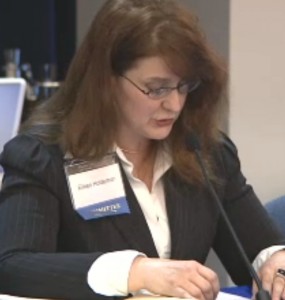
Eileen Holderman: "Yawning isn't a symptom"
Next, the committee moved on to a discussion of progress within the CDC, questioning Drs Belay and Unger about the earlier agency reports. Regarding the evaluation of the CDC website by a CFSAC sub-committee composed of Cook, Krafchick, Chu, Klimas and Holderman, Holderman reported that their review had focused on tone, language, content and pictures. Holderman thought the tone was much better than usual - not as offensive or condescending. But the language could be much stronger and really convey the extreme disability; what they are describing doesn’t sound like ME/CFS to her. The biggest problem they found was the section on case definition: it lists numerous definitions and suggests that they describe the same group of patients, even though the CCC, Fukuda and Cxford criteria are all radically different. The photos on the site really jump out as an issue, portraying people in suits and ties going to work yawning; Holderman explained that yawning isn’t a symptom. The sub-committee wants the photos to reflect the severity of the disease.
Unger replied that the philosophy was an attempt to present the positive side of ME/CFS. Holderman said she wants the site to reflect the reality. A lot of photos were about exercise, showing people in expensive gyms – completely inappropriate for the patient population. Unger said that a few ME/CFS experts did ask to be contributors and she appreciates that, but cautioned that, even when soliciting input, sometimes the effect isn’t as intended because there are many others (i.e. people at the CDC) involved in the process as well.
Dane Cook had a question for Elizabeth Unger: have any experts communicated disagreement with the way that the CME course has been presented? No, said Unger - they did ask them, and they saw something close to the final version and were sent a link to the website. Cook agreed with Holderman and Chu’s overall assessment of the website: he had seen quite a few typos, the photos issue seemed like an easy thing to change and he agrees whole-heartedly with that. He didn’t agree with the case definition criticisms, however; it’s a reality that those case definitions are out there, it’s simply true when the site states that the CDC uses Fukudu, and they’re right to just list, as education, that the definitions exist. Overall he described the material as ‘pretty balanced but superficial’ – it is light in terms of scientific knowledge but to be fair that’s not its intention.
Krafchick heartedly disagreed with Dane. We’ve endorsed the primer, he said; why not refer to the primer from the site? The Oxford definition doesn’t deserve to be in there, he added, and perhaps they could say there that the physicians have said it shouldn’t be there. He re-iterated the importance of the ‘black box for exercise’, and expressed his concern about CBT: the outcome measures just aren’t there, there’s no evidence-base, and it gets far too much attention.
Holderman repeated her disagreement with Cook regarding the case definition: we won’t fix the science, she said, if we’re being held back by 20-year old definitions like Fukuda and ‘flat erroneous’ definitions like Oxford - things will never improve until the CDC says that Oxford and Fukuda have seen their day. Cook agreed that the old definitions are limited; he was just saying that the CME simply presents what’s there. But education with out of date information is really mis-educating doctors and that’s what frightens us, Holderman replied.

Ken Friedman: Surely the [CDC's]
website should contain a clinical definition?
Ken Friedman wanted to clarify that what was under discussion was Fukuda: the CDC 1994 CDC revision of the 1988 Holmes criteria? That definition, he pointed out, was meant to be a research case definition. Yes, said Unger, but it’s been widely used by physicians. But is that distinction clear on the CDC site for new physicians, asked Friedman? Surely the website should contain a clinical definition? Unger answered that they describe how it came about and state that it’s used clinically.
In a comment that has already received much critical attention, Unger then asserted that some physicians are frightened and intimidated by the complexity of the CCC, and the CDC don’t want to frighten people away from caring for CFS patients. It would help, Friedman said, if there was at least some clarification as to why these two definitions exist, and to limit discussion on the website to just those two, for case diagnostic purposes. Unger said that the intent of the material is basic guidance. Holderman then spoke up to eloquently express what most watching patients were probably thinking: she had confidence that physicians are capable of understanding a complex definition, if patients themselves were capable of understanding the complex disease it described. This is a disease that’s hard on the patients, she pointed out.
Kravchick agreed: we need to take it up a notch, he said, so that physicians understand it. Maybe it’s best that they should feel overwhelmed by the reality; maybe they would then see that they need to refer patients to somebody who understands ME/CFS.
Belay reminded the committee that the last CFSAC meeting had made a recommendation that the HHS set up a workshop to look at the case definition, and he hoped that the data the CDC is collecting will feed into that, especially for clinical diagnostic purposes. Kravchick responded that the committee, in its recommendation, had emphasised that the primer was the place to start and had asked the CDC to link to the primer. The primer was a much better way to help somebody, he said: he’d rather have physicians read that and get the latest knowledge. A valuable clarification from Belay then gave what appears to be an excellent example of the kind of slow, but perhaps significant, step by step progress that CFSAC can achieve: whereas previously CFSAC had been told that the CDC could not, under its own rules, link to the primer, because it had not been through the necessary approval process, now that the primer has been posted on guidelines.gov the CDC would now be able to link to it as well. Apparently this would have to be an indirect link to the other federal site where the primer is hosted. This issue was not then probed in detail by the committee, however, nor was a recommendation tabled to ask the CDC to add such a link, but since the issue seems to have progressed it looks like one to persevere with.
Questions for Dr Unger
The focus of the questioning now switched from Dr Belay to Dr Unger. Since the CDC is using Fukuda in its multi-site study, perhaps it could add in PEM and see if that helps stratify patients? People argue about the best way to define PEM, said Unger. In their questionnaires, 80% had said they had PEM as one of their symptoms. Symptoms are tightly linked and that’s the problem as she sees it. Yes, more symptoms mean the patient is more severely ill, but the goal of the multi-site study is to use various approaches to the case definition and see how they group patients. Is the CDC study examining a severity component to PEM, she was asked? She sounded ‘agnostic’ on whether or not PEM is a key symptom. We need the data to look at this, Unger answered. It was suggested that she talk to Chris Snell about this issue. Can they analyze their data to see whether it’s true that PEM is a qualitative distinction? Yes, said Unger, I think we will be doing that: we want to see which questions will be most efficient, and end up with a simple list of things to ask people about that will separate out the different kinds of illness.
Alaine Perry echoed the mention of Chris Snell’s research, and paraphrased a quote from him: “The recovery time (using the repeated CPET test) from the initial exercise challenge is so long that it’s unheard-of in exercise physiology”: no other illness has such a long recovery time. PEM is a very clear and distinct phenomenon, from her personal experience. Fletcher backed this up, and argued again for the adoption of the CCC: the desire for researchers to have something simple and concrete is understandable - cheap, reliable biomarkers that don’t require two days of exercise time - but meanwhile in order to do research we need to identify patients that are the same: we need those “complex definitions” now, not in two years; with those tools we can get to where we want to go, and Fukuda’s not going to do it. Holderman supported that argument and said that the case definition is the most critical issue facing ME/CFS - we almost don’t want to ask for more research because it won’t be studying ME. Until we decide on the case definition we can always say we don’t have a biomarker, or treatment, or drug, because it doesn’t help all patients. We have to be studying and talking about the same disease.
Unger said she shared their concern about heterogeneity, but the question, for her, is whether any one case definition will solve it. What are the measures that will actually solve this, she asked? Even the CCC is heterogeneous; what we need is a way to understand which patients respond to certain treatments, and treatment trials will guide these subgroups: identifying who responds will fix this and then the case definition won’t matter, because treatment efficacy will fix it. Furthermore, the patient populations are heterogeneous even when using the same definition for other reasons: the length of illness, the patient’s age, severity and other factors all come into play as well. She does understand the problem, she said, but the question for her was how to solve it? In her view, we need these very large studies (such as the CDC’s multi-site study) to look at that, and see ‘what goes together’.
McCleary supported this line of reasoning, throwing in “a sort of heretical comment”: the work that’s being done now, she said, is based on the experience of expertise of long-standing expert physicans, but even they don’t have data on what happens when the disease transitions from acute to chronic: the sub-grouping may end up looking very different to any of the case definitions we have now. Indeed, said Unger: we only get to see patients at least a year after they got ill. Dubbo’s study of post-infective ME/CFS was especially important; we need to monitor those with chronic overlapping pain. No one study will be enough to answer this, she said, and we can’t rush this process: we want to be able to move forward. It is tragic, she added, that we’ve not been able to do that; we need to learn from that and try to be as evidence-based as we can.
Kravchick said he wanted to “go down on my knees and plead” for the CDC to incorporate some kind of post-exercise neuro-cognitive testing. Their lack of a 2-day exercise test-retest protocol will be fatal to their efforts, he warned. He’d seen this pattern over the last 10 years, he said, and he implored the CDC to seriously reconsider this issue with reference to the work of Chris Snell and Kasey Stevens.
Holderman said she definitely appreciated the need for data and evidence, but said that we do have lots of data: over 30 years of research, 10 years of work by this committee, over 6000 published papers: she thought that was quite enough evidence to say that we can embrace the CCC and move forward with that, reminding the committee that people are suffering and dying now.
Nancy Lee asked whether any bedbound patients are included in the CDC’s study. No, said Unger: they talked to physicians to try to do that, but by definition the patients in the study are able to get to their doctor’s office. They’d discussed what to do about this problem, and felt they should complete the study even so, but they’re aware that there is this house-bound group that we’re not reaching and they’re discussing what to do about that.
“The bar has been raised”
The day ended with a discussion about ‘how we go forward as a committee in order to be effective’ - how to make recommendations to the DHHS that are the most useful, that can be considered, and may be implemented. Gailen Marshall re-iterated Wanda Jones’ message in her welcome statement: he was receiving ‘increasing messages’ that the committee now needs to ‘do its homework’ and supply good background information regarding the recommendations. The Vaccine Advisory Committee, he noted, have been doing so for 2 years; they prepare position papers on each topic, before they give their recommendations, and a workgroup prepares them.
Sub-Committees
Marshall set out the objectives for the committee for the next day, and focused attention on the three sub-committees that would now be formed. The aim of one was to explore how to encourage leaders to realize that the illness can be cared for, a second would explore solutions to the problem of how to get more research funding (the goal of the third sub-committee escaped me, unfortunately). It was not an excuse for the underfunding, he agreed, but we do need information to help and encourage researchers to get over the perception that there is no money for ME/CFS research. Recalling Fletcher’s earlier comment about tests, he suggested that asking the FDA to revisit the regulations for important tests for ME/CFS was an example of the kind of ideas that the sub-committees might want to explore. He asked the committee members to think overnight about which of the three sub-committees they wanted to be part of, and also to review the recommendations list.
Marshall stated openly at this point that he was perfectly happy to get emails from the public – as he had mentioned at the beginning of the day, his email address was ‘widely available’, though he did not give it out, and he could forward material to committee members through that route. This prompted an intervention from Nancy Lee to clarify that all questions should be sent to the CFSAC mailbox – cfsac@hhs.gov - indicating that they should be shared with Dr Marshall. It would appear from all the winking, though, that both options are open…
The following discussion covered some ideas for the sub-committees to think about as well as the requested changes in the way the committee should work. Marshall spoke of the importance of learning modules for ME/CFS in medical schools – the AAMC was very interested in this, he said - and thought that the integrative approach seemed ideally suited to ME/CFS; nursing students were well ahead of primary care physicians with all this, of course, but there would be more physicians specializing in ME/CFS coming out of new initiatives for physicians. Perhaps this would be a good place to start?
Evidence Requested
McCleary wanted to know more about the experience of other committees and the changes in how the recommendation and implementation process might now work - how did other committees decide how to set their agenda and questions? Marshall said the model varied: sometimes the committees were responding to very specific questions coming down from above, and those committees tended to have working groups to answer those questions and produced about one recommendation every two years. He said that, in contrast, the problem for CFSAC is that we’re still struggling with the definition: we need to make recommendations about the kind of research that should be done, how money should be spent, what treatments were appropriate, etc etc etc. He noted that Dr Koh has been very responsive – and Wanda’s comments were spot on – in discussing what the committee needs to do to get progress and improve response. This was a learning process, he added.
Holderman felt that it was almost as if it was being suggested that there was some kind of defect in the committee in the last 10 years, whereas, on the contrary, we have a great advisory committee, two productive sub-committees, and excellent ex-officios. Her big concern was: is the problem really on CFSAC’s end? She felt the committee had done a great job with its recommendations.
Susan Maier said that when she looks at the list, she thinks back to recommendations she has received as NIH ex-officio: her question was always what she could do to take them on board and provide a response. For example, at the last meeting, the NIH were asked for an RFA for $7-10m of funding. She went back to her desk and looked at all funded CFS applications – and non-funded – since records were available, looked into spending, explored how much funding came in response to PFAs, RFAs, regular parent announcements, etc…it took her two weeks, and she reported her findings to her leadership…that, she said, is the type of information that the working groups would need to pull together in order to make a substantial recommendation to the secretary, but as ex-officios they can provide that technical assistance in order to present recommendations that can be taken up – that’s their job as ex-officios.
In response to the sense of unease about the changes expressed by Holderman, in particular, Nancy Lee said that she didn’t want to say anything against the important recommendations from the last several years, but this, she pointed out, is the change in the overall environment, and it’s coming down from above - from the Secretary for Health. Fletcher, however, said that she ‘didn’t join this committee to mull something over for 2-3 years before making recommendations'. CFSAC had made good, specific recommendations before. Its job was not to listen to music from on high, but to make its own evaluation of the state of ME/CFS, and make its bi-annual recommendations, from the ground up. She hoped the committee would keep on making recommendations until some of them are acted on.
Friedman noted that this was the tenth year of the committee and he didn’t remember any faces currently present as CFSAC members except Kim McCleary. But anyway, he said, we have put forward recommendations, and now we’re being asked for justification too. It’s understandable from the health seretary’s position, he said, but he agreed with Fletcher: it’s CFSAC’s job to keep the recommendations coming. Perhaps the committee might aim for a consultation with the secretary, to get them to understand the severity and the impact? Even without a good definition, he said, we should be still able to proceed: ME/CFS as a whole, in his opinion, is too vague to have a precise definition.
Holderman said she had been here for 10 years. They did have a workgroup before, they worked hard for two years on the name change, but it was shut down and went nowhere. Workgroups isn’t the magic answer, she warned. There was a ‘pretty amazing’ group here, and we need to look to those higher up.
Krafchick had found Wanda’s opening comments both helpful and disturbing: it seemed that recommendations had not been getting weight because CFSAC hadn’t provided enough background for them to be understood. CFSAC was being told that it had to have better documentation for the secretary; we’re going to have to give them some kind of paper background. If that’s necessary – and he heard it is – then we have to find some way to do it. But…are they going to have the staff support to do it?
Nancy noted that CFSAC had received responses (which are posted on the CFSAC website) to the last 3 meetings’ recommendations. Those responses take some months to come back to the committee, but at least they are being responded to now. McCleary saw all this as an opportunity for broader collaboration, taking a more strategic approach to problems, and going beyond a simple single recommendation that doesn’t take the whole landscape into consideration.
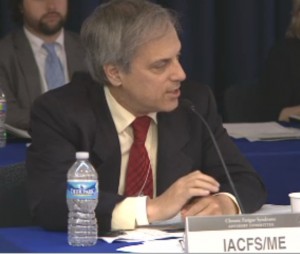
Fred Friedburg: "Do we have to make the case well? We do."
Friedburg said it made sense to him that when you recommend an RFA for $7-10m you have to justify it – and if you can do that with internal FDA data, even better. “Do we have to make the case well? We do”. If only we’d been told we could do that, said Fletcher: we were never given a mechanism to do that…we’d be happy to, we can do that…but we haven’t been asked to in the past. Well, said Marshall, we’ve been asked now. It’s a fair point though, he added: they never told us this before, and he revealed that he’s been trying to ask that very question - “Is this actually new?” - and he can’t get an adequate answer to that. But it’s clear that, going forward, this is how CFSAC is going to improve its chances.
Holderman said she’d stay open-minded, but writing position papers is also not actually a novel idea for this committee. She cited the example of an “outstanding position paper” from patient groups last week supporting the use of the CCC; before that, there had been position papers on the primer. Would it have an effect on anyone, she wondered? And she asked: could the advocacy groups get to be included in this process?
Finishing the day on a high note for those of us who signed the letter to the DHSS, Marshall said he was impressed with our position paper too, and the advocacy groups “absolutely” could be involved in the process. This, he said, is a working group of members and whoever they want to include. There’s no requirement that you have to write a position paper, he emphasised, but you do have to gather the appropriate evidence for why the recommendation is being put forward, and for the benefits of the recommendation.
The steer, said Marshall, was that the bar has been raised - and with that challenging thought, day one came to an end.
Mark Berry is a board member and volunteer for Phoenix Rising and has been ill for nearly 20 years now. He has been watching video streams of CFSAC meetings for the last three to four years. He realizes that, being from the UK, it's technically none of his business, but he hopes he'll be excused for commenting on CFSAC from across the pond, as there's nothing in the UK that remotely compares with this opportunity for engagement.
Phoenix Rising is a registered 501 c.(3) non profit. We support ME/CFS and NEID patients through rigorous reporting, reliable information, effective advocacy and the provision of online services which empower patients and help them to cope with their isolation.
There are many ways you can help Phoenix Rising to continue its work. You can even donate significant sums, at no cost to yourself, as you shop online! To find out more, visit Phoenix Rising’s Donate page by clicking the button below.
View the Post on the Blog


